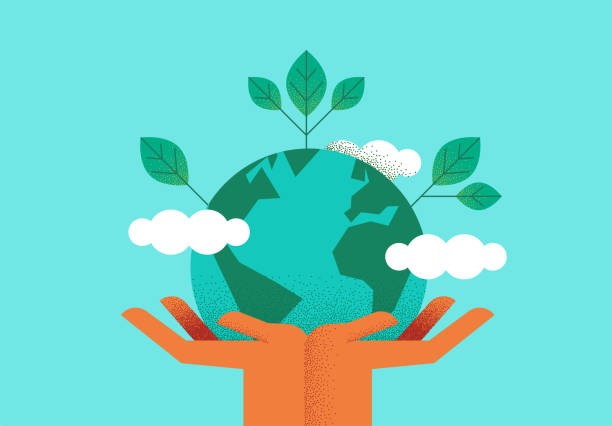In een wereld die zich steeds bewuster wordt van de impact op het milieu, zijn de keuzes die we in ons dagelijks leven maken van belang. Eén gebied waarop we een significant verschil kunnen maken, is onze schoonmaakroutine. Traditionele schoonmaakmiddelen, vaak van plastic, dragen bij aan vervuiling en milieuvervuiling.
In dit artikel worden duurzame alternatieven voor plastic schoonmaakartikelen besproken, zodat u milieuvriendelijke opties kunt omarmen zonder dat dit ten koste gaat van de hygiëne.

Het probleem met plastic schoonmaakgereedschap
Niet-biologisch afbreekbaar
Plastic schoonmaakgereedschap vormt een aanzienlijke uitdaging voor het milieu vanwege hun niet-biologisch afbreekbare karakter. In tegenstelling tot organische materialen blijft plastic eeuwenlang bestaan en draagt het substantieel bij aan de wereldwijde plasticafvalcrisis.
Bijdrage aan de plastic afvalcrisis
De grote vraag naar handige schoonmaakmiddelen stimuleert de voortdurende productie van plastic schoonmaakgereedschap. Dit productieproces, dat vaak afhankelijk is van fossiele brandstoffen, vergroot de CO2-voetafdruk die met deze artikelen gepaard gaat aanzienlijk.
Vrijgave van schadelijke chemicaliën
Fotodegradatie van plastic , versneld door blootstelling aan zonlicht, brengt chemische additieven vrij die bij de productie worden gebruikt. Deze gifstoffen kunnen in de bodem en het water terechtkomen en een bedreiging vormen voor ecosystemen en dieren in het wild.
Impact op stortplaatsen
Onjuiste afvalverwerking verergert de druk op stortplaatsen die toch al vol zitten met niet-biologisch afbreekbaar afval. Kunststof schoonmaakmiddelen dragen bij aan de levensduur van stortplaatsen en verhinderen de natuurlijke afbraak van afval.
Oceaanvervuiling
Plastic schoonmaakgereedschappen belanden in de oceanen en vormen een integraal onderdeel van het wijdverbreide probleem van plastic afval. Het zeeleven wordt erdoor aangetast en de fragmentatie van plastic in microplastics vormt een ernstige bedreiging voor het gehele aquatische ecosysteem.
Microplastics in de voedselketen
Microplastics, afkomstig van de afbraak van plastic in oceanen, dringen de voedselketen binnen. Organismen op verschillende niveaus, waaronder vissen die door mensen worden gegeten, zijn de dupe van deze wijdverbreide vervuiling.
1. Milieuvriendelijke schoonmaakborstels: het schrobdilemma aanpakken
Traditionele plastic schrobborstels zijn duurzaam, maar schadelijk voor het milieu. Vervang ze door milieuvriendelijke alternatieven, gemaakt van materialen zoals bamboe of duurzaam geproduceerd hout. Deze borstels pakken hardnekkige vlekken effectief aan zonder in te leveren op duurzaamheid. Bovendien kunt u, wanneer de borstelharen versleten zijn, alleen het borstelgedeelte vervangen, waardoor u minder afval produceert.
2. Biologisch afbreekbare sponzen: plasticvervuiling wegvegen
Sponzen zijn onmisbaar in de schoonmaak, maar hun synthetische tegenhangers dragen bij aan microplasticvervuiling. Kies voor biologisch afbreekbare sponzen gemaakt van natuurlijke materialen zoals cellulose of plantenvezels. Deze sponzen absorberen effectief vloeistoffen en schrobben oppervlakken, terwijl ze milieuvriendelijk zijn. Na hun levensduur kunnen ze worden gecomposteerd, zonder dat er plasticresten achterblijven.

3. Herbruikbare microvezeldoeken: een duurzame oplossing voor het afnemen van vuil
Microvezeldoeken, vaak gemaakt van synthetische materialen, laten microplastics los tijdens gebruik en wassen, wat bijdraagt aan verdere milieuvervuiling. Kies herbruikbare microvezeldoeken van natuurlijke vezels zoals katoen of bamboe. Deze alternatieven bieden dezelfde effectieve reinigingsmogelijkheden, maar hebben als bijkomend voordeel dat ze machinewasbaar en duurzaam zijn.
4. Vuilniszakken op basis van maïszetmeel: een transformatie van het afvalverwerkingsproces
De reis naar duurzaamheid gaat verder dan alleen schoonmaakgereedschap, het gaat ook over afvalverwerkingsmethoden. Traditionele plastic vuilniszakken blijven eeuwenlang op de vuilnisbelt liggen. Ontdek vuilniszakken op basis van maïzena die biologisch afbreekbaar en composteerbaar zijn. Hoewel deze zakken de duurzaamheid bieden die nodig is voor afvalverwerking, breken ze op natuurlijke wijze af, waardoor de impact op het milieu wordt geminimaliseerd.
5. Bezemkoppen van gerecycled plastic: plastic een tweede leven geven
Als je al een vertrouwde bezem hebt, overweeg dan om alleen de bezemkop te vervangen door een exemplaar van gerecycled plastic. Deze bezemkoppen zijn gemaakt van gerecycled plastic , waardoor er minder plastic op de stortplaats belandt en de circulaire economie wordt bevorderd. Ze bieden dezelfde veegefficiëntie en dragen tegelijkertijd bij aan een vermindering van de vraag naar nieuwe plasticproductie.
6. Spuitflessen van glas of roestvrij staal: verbeter uw schoonmaakarsenaal
Traditionele plastic spuitflessen zijn vaak voor eenmalig gebruik en dragen bij aan de plastic afvalberg. Investeer in glazen of roestvrijstalen spuitflessen die niet alleen duurzaam, maar ook herbruikbaar zijn. Deze alternatieven kunnen worden nagevuld met milieuvriendelijke schoonmaakmiddelen, waardoor u minder afhankelijk bent van plastic wegwerpflessen en de schade aan het milieu tot een minimum beperkt.
7. Dweilkoppen van natuurlijke vezels: plasticvervuiling opruimen
Dweilen met synthetische vezels laten tijdens gebruik microplastics los, wat bijdraagt aan de plasticvervuiling. Stap over op dweilkoppen van natuurlijke vezels zoals katoen of jute. Deze materialen reinigen vloeren effectief en zijn bovendien biologisch afbreekbaar en composteerbaar aan het einde van hun levenscyclus, wat zorgt voor een duurzamere dweilervaring.

Een schonere toekomst, één duurzame keuze tegelijk
Het omarmen van duurzame alternatieven voor plastic schoonmaakmiddelen is een tastbare en impactvolle manier om bij te dragen aan een schonere planeet. Door te kiezen voor milieuvriendelijke opties verkleint u niet alleen uw ecologische voetafdruk, maar ondersteunt u ook industrieën en praktijken die prioriteit geven aan de gezondheid van onze planeet. Door gezamenlijk over te stappen op groenere schoonmaakgewoonten, effenen we de weg voor een duurzamere toekomst, waarin netheid hand in hand gaat met milieubewustzijn.


